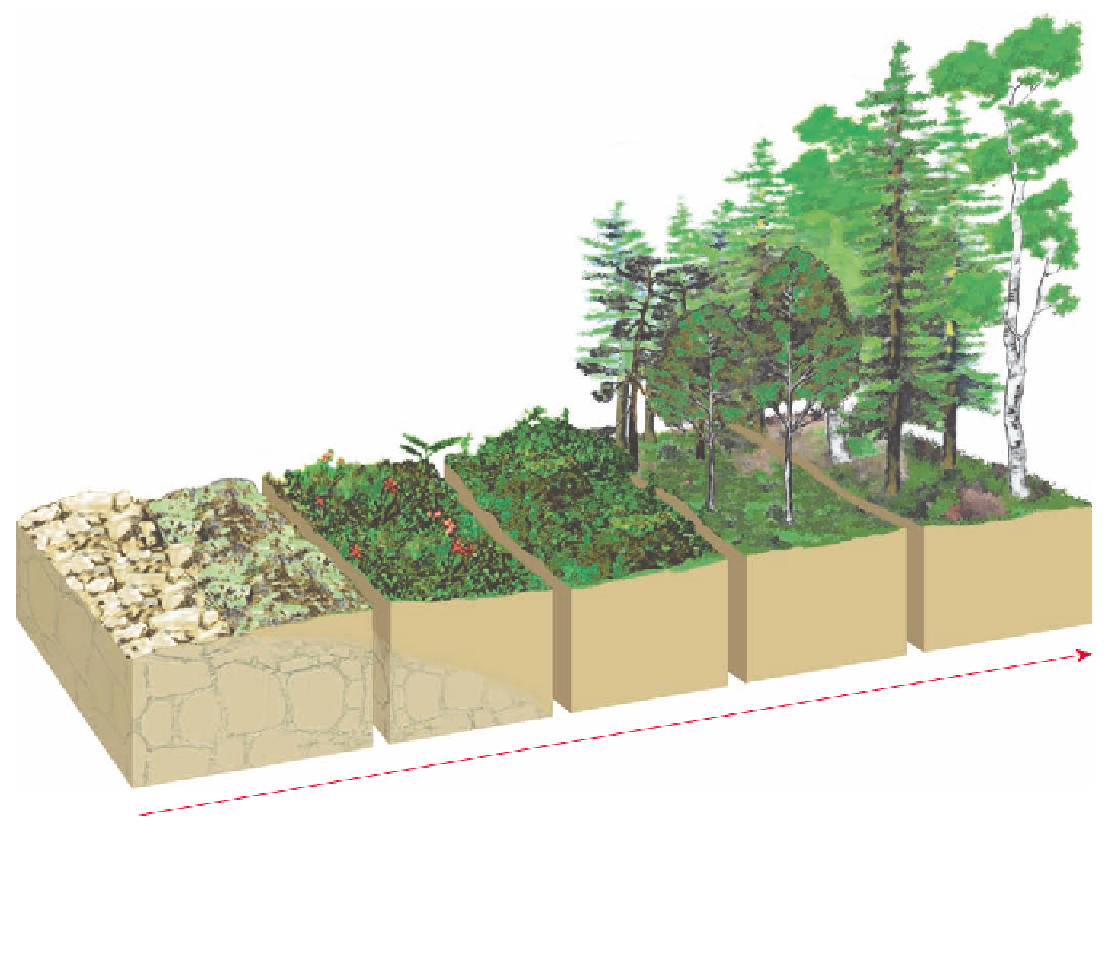Environmental Engineering Reference
In-Depth Information
nity of organisms has been disturbed, removed, or
destroyed, but the soil or bottom sediment remains.
Candidates for secondary succession include aban-
doned farmlands (Figure 6-10, p. 120), burned or cut
forests, heavily polluted streams, and land that has
been dammed or flooded. Because some soil or sedi-
ment is present, new vegetation usually can begin to
germinate within a few weeks. Seeds can be present in
soils, or they can be carried from nearby plants by
wind or by birds and other animals.
During primary or secondary succession, distur-
bances such as natural or human-caused fires or defor-
estation can convert a particular stage of succession to
an earlier stage. Such disturbances create new condi-
tions that encourage some species and discourage or
eliminate others.
species and is in balance with its environment. This
equilibrium model of succession is what ecologists
once meant when they talked about the
balance of nature.
Over the last several decades, many ecologists
have changed their views about balance and equilib-
rium in nature. Under the old balance-of-nature view,
a large terrestrial community undergoing succession
eventually became covered with an expected type of
climax vegetation. In reality, a close look at almost any
community reveals that it consists of an ever-chang-
ing mosaic of vegetation patches at different stages of
succession.
The modern view is that we cannot project the course of
a given succession or view it as preordained progress toward
an ideally adapted climax community.
Rather, succession
reflects the ongoing struggle by different species for
enough light, nutrients, food, and space. This competi-
tion allows them to survive and gain reproductive ad-
vantages over other species.
Explore the differences between primary and secondary
succession at Environmental ScienceNow.
Can We Predict the Path of Succession
and Is Nature in Balance?
Scientists cannot project the course of a given
succession or view it as preordained progress toward
a stable climax community that is in balance with its
environment.
According to the classic view, succession proceeds in an
orderly sequence along an expected path until a certain
stable type of
climax community
occupies an area. Such a
community is dominated by a few long-lived plant
Lichens
and mosses
Exposed
rocks
Balsam fir,
paper birch, and
white spruce
forest community
Jack pine,
black spruce,
and aspen
Heath mat
Small herbs
and shrubs
Active Figure 6-9
Natural capital:
starting from scratch.
Primary ecological succession
over several hundred
years of plant communities on bare rock exposed by a retreating glacier on Isle Royal in northern Lake Superior.
See an animation based on this figure and take a short quiz on the concept.














